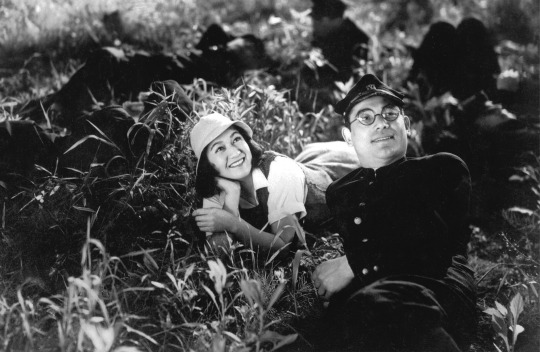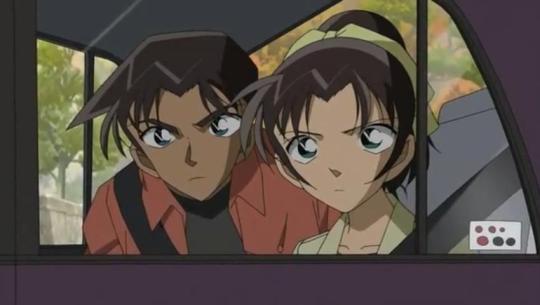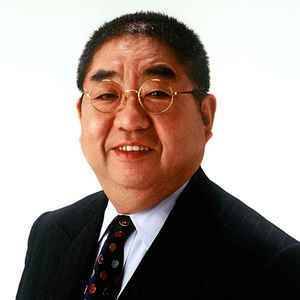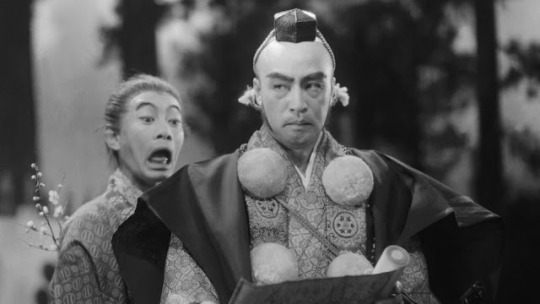#Tadashi Hattori
Text

SIX FANARTS CHALLANGE !!!! this was all i did this week lmao enjoy
+ zoom ins under the cut just in case tumbl ruined the img lmao
yippieeeeee






#aofi art#pearlescentmoon#pearlescentmoon fanart#double life smp#dcmk#名探偵コナン#kudo shinichi#shinichi kudo#miles morales#spiderman#itsv#amane yugi#hanako kun#tbhk#jshk#hattori heiji#heiji hattori#tadashi hamada#big hero 6#six fanarts#christ thats so much tags fhshdhdh#guys this took me 15 hrs to do pls b proud
686 notes
·
View notes
Text
Boyfriend / Husband Material
( some of these are subjective )
100 percent:
Tamaki Suoh
Tenya Iida
Johnathan Joestar
Yuuki Sohma
Death the Kid
Gintoki Sakata ( lol but I have my reasons )
Shigeo / Mob Kageyama
Izumi Miyamura
Kaien Shiba
Asta
Zen Wisteria
Noctis Lucis Caelum
Clive Rosfield
Alcryst
Diamant
Ephraim
Akihiko Sanada
Aogami
Jude Mathis
Alphen
Law
Ethan Winters
Haseo ( lol )
Link ( Twilight Princess )
Needs work but can improve:
L Lawliet / Ryugazaki
Kyon
Kyoya Ootori
Tamaki Amajiki
Diego Brando ( I mean he canonically married someone lol )
Rei Ryugazaki
Lau
Ronald Knox
Ling Yao
Edward Elric
Roy Mustang
Hijikata Toshiro
Reigen Arataka ( lol )
Ritsu Kageyama
Zelgadiss Greywords
Ren Tsugura
Langa Hasegawa
Tadashi Kikuchi
Byakuya Kuchiki
Barnaby Brooks Jr.
Ryan Goldsmith / Golden Ryan
Gray Fullbuster
Jellal Fernandez
Heiji Hattori
Saguru Hakuba
Vash ( Saverem ) Stampede
Itachi Uchiha
Abel Knightlord
Ion Fortuna
Kento Nanami
Synchro
Control
Suzaku Kururugi
Zidane
Cidolfus Telamon
Ferdinand von Aegir
Gregory
Phoenix Wright
Simon Blackquill
Toshiro Kasukabe
Dante Sparda
Nero de Angelo
Rindo Kanade
Hishima Sakazuki
Leon Kennedy
Ovan
Astarion Ancunín
Mike Schmitt
No chance in hell / Run:
Light Yagami
Jotaro Kujo ( sorry Jotaro but yeah you are here )
Sebastian Michaelis
Sougo Okita
Kamui
Takasugi Shinsuke
Xelloss
Reino
Ainosuke Shindo / Adam
Knives Millions
Cain Knightlord
Satoru Gojo ( lol )
Suguru Geto ( lol )
Lelouch vi Britannia / Zero
Sephiroth
Vincent Valentine ( lol )
Niles / Zero
Griss
Sho Minazuki
Tohru Adachi
Byakuya Togami
V & Vergil Sparda
Sho Minamimoto
Karl Heisenburg
Albert Wesker
2 notes
·
View notes
Photo

Setsuko Hara and Susumu Fujita in No Regrets for Our Youth (Akira Kurosawa, 1946)
Cast: Setsuko Hara, Susumu Fujita, Denjiro Okochi, Haruko Sugimura, Eiko Miyoshi, Kokuten Kodo, Akitake Kono, Takashi Shimura, Taizo Fukami, Masao Shimizu. Screenplay: Eijiro Hisaita, Akira Kurosawa, Keiji Matsuzaki. Cinematography: Asakazu Nakai. Production design: Keiji Kitagawa. Film editing: Akira Kurosawa. Music: Tadashi Hattori.
No Regrets for Our Youth seems like an ironic title for a film made in a country that in 1946 had much to regret. It is, in fact, a kind of apologia for the mistreatment of the students and intellectuals who resisted the rise of militaristic fascism in Japan, a fictionalized treatment of the "Takigawa incident" of 1933 -- an event that perhaps few in the West, except students of Japanese history, know about today. After a professor at the law school of Kyoto University was removed by the Japanese Ministry of Education for statements that the education minister regarded as "Marxist," other faculty members resigned and students went on strike. Kurosawa's film focuses on a professor (Denjiro Okochi), his daughter Yukie (Setsuko Hara), and two of his students, Itokawa (Akitake Kono) and Ryukichi Noge (Susumu Fujita), and spans the years from the incident at the university to the end of the war. It's unusual among Kurosawa's films in that the protagonist is a woman, Yukie, whose relationships with her scholarly father, the accommodating Itokawa, and the rebellious Noge are examined in detail. She chooses to join Noge in his revolt against the Japanese government, which leads to their imprisonment and his death, after which she seeks out his parents, peasants in a remote village. They have been shunned by the other villagers as "spies" and "traitors," but she defies them and helps Noge's parents survive, doing the backbreaking work of clearing land and planting rice. Setsuko Hara, who did some of her most memorable work for Yasujiro Ozu but also appeared in Kurosawa's 1951 film Hakuchi, is nothing short of phenomenal as Yukie, ranging from the young and flirtatious girl to the worn but determined survivor. Kurosawa, as usual, is a skilled storyteller -- he edited as well as directed the film.
4 notes
·
View notes
Text










Couples Anime >Yes or No<
Shoto Todoroki & Momo Yaoyorozu | My Hero Academia
Leon Saijou & Erika Chiba | The Irregular at Magic High School
Tadashi Karino & Akira Tōdō | Special A
Erza Scarlet & Jellal Fernandes | Fairy Tail
Mitsuhide Louen & Kiki Seiran | Akagami No Shirayukihime!
Heiji Hattori & Kazuha Toyama | Detective Conan
Julie Makimoto & Billy Gilbert | Bakugan
Chiharu Mihara & Takashi Yamazaki | Cardcaptor Sakura: CC
Tsubasa Andō & Misaki Harada | Gakuen Alice
Rei Kon & Mao Chen | Beyblade: G-Revolution
>>>>>>>>>>>>>>>>>>>>>>>>>>>>>>>>>>>>>>>>>>>>>>>>>>>>>>>>>
My opinion;-
Shoto & Momo | Yes but not sure...
Leon & Erika | Yes but not sure either...
Tadashi & Akira | Yes and hope so...
Erza & Jellal | Yes, please...
Mitsuhide & Kiki | ??? going be awhile...
Heiji & Kazuha | Yes
Julie & Billy | ??? Maybe...
Chiharu & Takashi | ??? Well...
Tsubasa & Misaki | Yes!
Rei & Mao | Yes!
0 notes
Text
Định đến Việt Nam 3 tháng, bác sĩ Hattori đã đi 20 năm, đem lại ánh sáng cho gần 20.000 người
Định đến Việt Nam 3 tháng, bác sĩ Hattori đã đi 20 năm, đem lại ánh sáng cho gần 20.000 người
Chuyến đi tưởng 3 tháng của bác sĩ Hattori Tadashi vào năm 2002 rốt cuộc kéo dài đến 20 năm, lấy đi của ông không ít thứ nhưng đem lại ánh sáng cho gần 20.000 người. Ông không lấy bất cứ tiền công nào, thậm chí còn bỏ tiền túi cho người bệnh.
Bác sĩ Hattori Tadashi nhận hoa chúc mừng từ bà Tôn Thị Kim Thanh, chủ tịch Hội Nhãn khoa Việt Nam, trong sự kiện ở Đại sứ quán Nhật Bản tại Hà Nội ngày…

View On WordPress
#bác sĩ Hattori ở lại 20 năm#bác sĩ thiện nguyện#cứu giúp 20.000 người Việt khỏi mù#Giải thưởng Ramon Magsaysay
0 notes
Video
youtube
Japanese Pottery and Porcelain, 1955, From the Vaults
Have you ever wondered what it takes to make a teapot or a massive, hand-built vase? In this mesmerizing short film about Japanese pottery and porcelain, traditional and modern techniques coexist at the manufactory. The human hand and machine work in harmony here, producing beautiful wares for everyday use. Follow the creative process from start to finish—gathering and preparing raw clay, wedging, throwing, firing, glazing, and later presenting finished works in the showroom. Music by Tadashi Hattori, who worked with acclaimed director Akira Kurosawa.
The Metropolitan Museum of Art
#Japanese#porcelain#stoneware#craft#20th century#1950s#industrialization#Metropolitan Museum of Art#film#art#art history#ceramic#The Met#short
15 notes
·
View notes
Video
Today's review on MyOldAddiction.com, One Wonderful Sunday by #AkiraKurosawa, "pitched at a perfectly delicate tone" AKIRA KUROSAWA Bil's rating (out of 5): BBBB. Japan, 1947. Toho Company. …
#Aguri Hidaka#Akira Kurosawa#Asakazu Nakai#Atsushi Watanabe#Chieko Nakakita#Ichirô Namiki#Ichirô Sugai#Isao Numasaki#Japan#Katao Numazaki#Kazuo Kubo#Keinosuke Uekusa#Masao Shimizu#Midori Ariyama#Shiro Mizutani#Sojiro Motoki#Tadashi Hattori#Toho Company#Tokuji Kobayashi#Toppa Utsumi#Toshi Mori#Zekô Nakamura#Zenji Koizumi
0 notes
Text
Anime Theme Song Composer Asei Kobayashi Passes Away
Anime Theme Song Composer Asei Kobayashi Passes Away
Commercial and anime theme song composer Asei Kobayashi passed away on May 30, 2021 from heart failure. He was 88 years old at the time of his passing.
Kobayashi was from Tokyo, and he graduated from Keio University. He studied under composer Tadashi Hattori. He became well-known after a 1961 jingle for apparel maker Renown Inc. He later composed music for commercials for companies such as…

View On WordPress
0 notes
Text
ORGANIC PEPPERMINT OIL
Oregano Oil Use For Animal Feed
Health Benefits
The health benefits of this oldest herbal medicinal oil include the following:
Reduces Joint Pain And Muscle Pain
Peppermint oil can be used externally to provide relief from muscle pain and joint pain. It is believed that the presence of calcium antagonism in organic peppermint oil helps remove pain from affected areas. In case of injury or wound, simply apply this oil topically to the area to reduce swelling, relieve pain, and eliminate the chances of uncomfortable inflammation of the joints. Furthermore, the researcher has patented a pain relief composition from a mixture of aloe vera oil, lemon oil, orangic essential oils, eucalyptus oil, peppermint oil, rosemary oil, carrier oils Supplier.

A bottle of peppermint oil with a fresh twig on a wooden table
Prevents Sinus
Inhaling this herbal oil helps relieve congestion of the sinuses, and helps prevents other problems including nasal congestion, cold, asthma, bronchitis, and cough.
Suppresses Appetite
Taking a few sniffs of organic peppermint oil or applying it directly to your chest or temples can help in curbing cravings and make you feel full faster.
Boosts Energy
If you have chronic fatigue syndrome, Natural essential oils can be very beneficial because it's analgesic properties help improve energy levels, focus, and concentration and thereby help you work better in your day-to-day life.
Prevents Allergy
Organic Peppermint oil along with herbal eucalyptus oil and clove can help prevent the risk of allergies by relaxing your nasal passages and clearing out the nose of any muck and pollens.
Treats ADHD
Rubbing a few drops of peppermint oil on your child’s shirt or top can prevent ADHD by improving alertness and concentration.
Anti-itch
If it’s a rash that giving you the itch or poison ivy, you can use peppermint oil to soothe and relieve it.
Reduces Fever
It is also cooling in nature and is subsequently used to reduce a high fever. It is frequently called a “refrigerant”, meaning that it can help an intensely cold sensation to any affected area.
Uses Of Peppermint Oil
Shampoo:Organic Peppermint oil, when mixed with your shampoo, is very useful for hair care as it gives a cooling effect to the head while removing dandruff and lice. Organic Peppermint oil can also be found in many other hair products and alternative solutions for dandruff, baldness, and other hair-related conditions.
Bug repellent:Ticks, ants, mice, spiders, cockroaches, and other bugs can be easily kept away from your home by using peppermint oil.
Nail Care:There is significant research that shows its topical application can help in reducing the chances of fungal infection in the nail, which affects many people around the world.
Teething:With a 1:1 ratio between organic peppermint oil and coconut oil, you can help your child bear with the pain of teething by simply applying it directly to their gums
Sunburn:By hydrating burnt skin and relieving pain, organic peppermint oil is a homemade recipe for sunburn. Simply all you need to do is to simply mix it with coconut oil and then apply it to the affected area.
Word of Caution:
There are some risks in using too much organic peppermint oil, including the following:
- Allergic reactions like tongue spasms, flushing, and mouth sores
- Heartburn
- Anal burning
- Headaches
Basically, the same rules apply to use organic peppermint oil as to any other alternative supplement or dietary change; speak to a doctor, and if you don’t consult a professional, start with small topical doses or skin patch tests to see how it affects your intestine system.
Promotes Hair Growth
Organic Peppermint oil has regenerative, antiseptic, and stimulating effects, which helps relieve dry scalp and irritation, stimulate hair growth for those suffering from baldness and give hair a fresh shiny, fresh look. Inventors Tadashi Fukuma and Renzo Hattori patented a formula that acts as a hair growth stimulant, which involved the use of organic peppermint oil too.
0 notes
Text
Welcome To 2.0 [Nekoma 2.0 Guide]
read it on the AO3 at https://ift.tt/30J36iv
by trixie_moon
Everything you need to know about Nekoma 2.0!
Will be updated when new major characters appear in the main story (Mainline). In the meantime, enjoy!
Words: 628, Chapters: 1/?, Language: English
Series: Part 3 of Nekoma 2.0
Fandoms: Haikyuu!!
Rating: General Audiences
Warnings: No Archive Warnings Apply
Categories: F/F, F/M, Gen, M/M, Multi
Characters: Miya Atsumu, Fujiwara Emiko (OC), Miya Hiroaki (OC), Miya Haruhiro (OC), Miya Hitoshi (OC), Original Characters, Bokuto Kaito (OC), Sakusa Kyouya (OC), Ushijima Sora (OC), Original Male Character(s), Original Female Character(s), Fujiwara Daisuke (OC), Miya Osamu, Fujiwara Himari (OC), Fujiwara Yua (OC), Fujiwara Aito (OC), Kuroo Tetsurou, Kozume Kenma, Kuroo Sachi (OC), Kuroo Kimiko (OC), Akaashi Keiji, Bokuto Koutarou, Ushijima Wakatoshi, Hattori Aiko (OC), Inuoka Sou, Inuoka Aki (OC), Inuoka Chiho (OC), Takata Sayuri (OC), Inuoka Haruto (OC), Shibayama Yuuki, Shibayama Shizue (OC), Shibayama Takumi (OC), Yamamoto Taketora, Yamamoto Ayano (OC), Yaku Morisuke, Haiba Lev, Yaku Misha (OC), Nakaya Rintarou (OC), Nakaya Sachiko (OC), Sato Junichi (OC), Sato Fuyumi (OC), Sato Kohaku (OC), Nawagata Shigeru (OC), Nawagata Mitsuki (OC), Nawagata Jirou (OC), Suzukawa Mari (OC), Suzukawa Tadashi (OC), Suzukawa Tenshin (OC), Nakayama Daiki (OC), Nakayama Mizuko (OC), Nakayama Kazuhiro (OC), Watanabe Hisoka (OC), Hayashi Yasuko (OC), Watanabe Katsuo (OC), Minamoto Mamoru (OC), Sakusa Kiyoomi, Hishino Kosuke (OC)
Relationships: Miya Atsumu/Fujiwara Emiko (OC), Miya Atsumu/Original Female Character(s), Original Character/Original Character, Haiba Lev/Yaku Morisuke, Kozume Kenma/Kuroo Tetsurou, Akaashi Keiji/Bokuto Koutarou, Miya Osamu/Fujiwara Daisuke (OC), Miya Osamu/Original Male Character(s), Original Character(s)/Original Character(s), Ushijima Wakatoshi/Original Female Character(s), Sakusa Kiyoomi/Original Male Characters(s), Hattori Aiko (OC)/Ushijima Wakatoshi, Hishino Kosuke (OC)/Sakusa Kiyoomi, Inuoka Sou/Original Female Character(s), Inuoka Sou/Inuoka Chiho (OC), Inuoka Aki (OC)/Takata Sayuri (OC), Shibayama Yuuki/Original Female Character(s), Shibayama Yuuki/Shibayama Shizue (OC), Yamamoto Taketora/Original Female Character(s), Yamamoto Taketora/Yamamoto Ayano (OC), Nakaya Rintarou (OC)/Nakaya Sachiko (OC), Sato Junichi (OC)/Sato Fuyumi (OC), Nawagata Shigeru (OC)/Nawagata Mitsuki (OC), Nakayama Mizuko (OC)/Nakayama Kazuhiro (OC), Watanabe Hisoka (OC)/Hayashi Yasuko (OC), Watanabe Hisoka (OC)/Minamoto Mamoru (OC), Suzukawa Mari (OC)/Suzukawa Tadashi (OC)
Additional Tags: Original Character(s), Character Study, Guide To The Universe, Children of Characters, Post-Canon, Haikyuu Timeskip Spoilers, Adoption, Surrogacy, Children, basically a lot of ways they got kids, some in less traumatic ways, but overall theyre good kids, even if some people [read: Aki and the nakayas] are assholes, The Miya Grandparents are assholes too, unfortunately, Parenthood, Siblings, Step-siblings, Adopted Sibling Relationship
read it on the AO3 at https://ift.tt/30J36iv
0 notes
Text
MUSE LIST AND AVAILBILTY
**SUBJECT TO CHANGE.
ANIME & MANGA
DEATH NOTE
Light Yagami-Secondary
L Lawliet / Ryugazaki-Secondary
Misa Amane-Secondary
THE MELANCHOLY OF HARUHI SUZUMIYA
Tsuruya-Secondary
Kyon-Secondary
OURAN HIGH SCHOOL HOST CLUB
Haruhi Fujioka-Secondary
Tamaki Suou-Secondary
Kyoya Ootori-Primary
BOKU NO HERO ACADEMIA
Tenya Iida-Secondary
Tamaki Amajiki-Request
JOJO’S BIZARRE ADVENTURE
Johnathan Joestar-Secondary
Jotaro Kujo ( Part 3 only )-Primary
Trish Una- Secondary
Diego Brando-Primary
FREE!! IWATOBI SWIM CLUB
Rei Ryugazaki-Request
FRUITS BASKET
Yuuki Sohma-Request
BLACK BUTLER
Sebastian Michaelis-Primary
Madame Red-Secondary
Lau-Secondary
Ronald Knox-Request
SAILOR MOON
Usagi Tsukino-Primary
Rei Hino-Request
SOUL EATER
Death the Kid-Primary
Maka Albarn-Primary
FULL METAL ALCHEMIST
Ling Yao-Primary
Edward Elric-Primary
Roy Mustang-Secondary
GINTAMA
Gintoki Sakata-Primary
Hijikata Toshiro-Secondary
Sougo Okita-Secondary
Kamui-Request
Takasugi Shinsuke-Secondary
Otae Shumura-Secondary
MOB PSYCHO 100
Ritsu Kageyama-Request
Reigen Arataka-Primary
Shigeo / Mob Kageyama-Primary
SLAYERS
Lina Inverse-Primary
Xelloss-Primary
Zelgadiss Greywords-Primary
SKIP BEAT
Kyoko Mogami-Secondary
Ren Tsugura-Request
Reino-Request
HORIMIYA
Izumi Miyamura-Request
SK8 INFINITY / SKATE THE INFINITY
Langa Hasegawa / Snow-Request
Tadashi Kikuchi / Snake-Request
Ainosuke Shindo / Adam-Primary
BLEACH
Byakuya Kuchiki-Primary
Kaien Shiba-Secondary
TIGER & BUNNY
Barnaby Brooks Jr.-Primary
Karine Lyle / Blue Rose-Secondary
Ryan Goldsmith / Golden Ryan-Secondary
FAIRY TAIL
Gray Fullbuster-Primary
Jellal Fernandez-Secondary
DETECTIVE CONAN / MAGIC KAITO
Ai Haibara / Shiho Miyano-Secondary
Heiji Hattori-Secondary
Saguru Hakuba-Primary
Akako Koizumi-Secondary
TRIGUN
Meryl Stryfe-Primary
Vash ( Saverem ) Stampede-Primary
Knives Millions-Seconday
CHAINSAW MAN
Kobeni Higashiyama-Secondary
NARUTO
Hinata Hyuuga-Request
Itachi Uchiha-Primary
TRINITY BLOOD
Abel Knightlord-Primary
Cain Knightlord-Primary
Ion Fortuna-Request
Esther Blanchett-Primary
JUJUTSU KAISEN
Maki Zenin-Secondary
Satoru Gojo-Primary
Kento Nanami-Secondary
Suguru Geto-Request
BLACK CLOVER
Asta-Primary
SNOW WHITE WITH THE RED HAIR
Zen Wisteria-Primary
Shirayuki-Primary
CORRECTOR YUI
Yui Kasuga / Corrector Yui-Primary
Synchro-Secondary
Control-Secondary
CODE GEASS
Lelouch vi Britannia / Zero-Secondary
Suzaku Kururugi-Secondary
VIDEO GAMES
FINAL FANTASY SERIES
Sephiroth-Request
Noctis Lucis Caelum-Primary
Zidane-Secondary
Aerith Gainsborough-Secondary
Vincent Valentine-Primary
Clive Rosfield-Primary
Cidolfus Telamon-Primary
FIRE EMBLEM SERIES
Micaiah-Primary
Charlotte-Secondary
Celica-Secondary
Niles / Zero-Primary
Hilda Valentine Goneril-Request
Ferdinand von Aegir-Secondary
Griss / Gregory-Primary
Alcryst-Primary
Diamant-Primary
Ephraim-Secondary
F! Alear-Primary
ACE ATTORNEY SERIES
Phoenix Wright-Secondary
Athena Cykes-Primary
Simon Blackquill-Primary
Franziska von Karma-Secondary
PERSONA SERIES
Maya Amano-Primary
Akihiko Sanada-Primary
Mitsuru Kirijo-Primary
Sho Minazuki-Secondary
Labrys-Primary
Naoto Shirogane-Secondary
Yukiko Amagi-Primary
Tohru Adachi-Secondary
Toshiro Kasukabe-Primary
SMT SERIES
Aogami-Secondary
DANGANRONPA SERIES
Byakuya Togami-Request
Kaede Akamatsu-Request
DEVIL MAY CRY SERIES
Nero de Angelo-Secondary
Dante Sparda-Primary
Lady / Mary-Request
V & Vergil Sparda-Primary
TWEWY: NEO
Sho Minamimoto -Secondary
Nagi Usui -Secondary
Shoka Sakurane -Secondary
Rindo Kanade -Secondary
Hishima Sakazuki -Secondary
TALES OF
Jude Mathis-Secondary
Alphen-Secondary
Law-Secondary
RESIDENT EVIL SERIES
Karl Heisenburg -Primary
Ethan Winters -Secondary
Leon Kennedy -Secondary
Clair Redfield-Request
Jill Valentine-Request
Albert Wesker-Primary
DOT HACK GU
Haseo-Primary
Atoli-Secondary
Ovan-Primary
BAULDER’S GATE 3
Astarion Ancunín-Primary
Shadowheart-Request
Tav / Serenity Caldwell-Primary
FNAF MOVIE
Mike Schmitt-Request
THE LEGEND OF ZELDA
Link ( Twilight Princess )-Secondary
#long post cw#mobile muses list;;#muses list;;#I finally updated this and will be getting rid of my muse availability page
3 notes
·
View notes
Photo

Isao Numasaki and Chieko Nakakita in One Wonderful Sunday (Akira Kurosawa, 1947)
Cast: Isao Numasaki, Chieko Nakakita, Atsushi Watanabe, Zeko Nakamura, Ichiro Sugai, Masao Shimizu, Shiro Mizutani, Midori Ariyama, Toshi Mori. Screenplay: Akira Kurosawa, Keinosuke Uekusa. Cinematography: Asakazu Nakai. Production design: Kazuo Kubo. Music: Tadashi Hattori.
Akira Kurosawa's One Wonderful Sunday brings to mind two near-contemporary films: Frank Capra's It's a Wonderful Life (1946) and Vittorio De Sica's Bicycle Thieves (1948). In its own odd way, Kurosawa's film blends a bit of the fantasy of the Capra film with the neorealism of the De Sica, though it doesn't quite succeed in the attempt. All three are products of the postwar world. The Americans, having won the war, naturally put the stress on optimism; the Italians and the Japanese, having lost, and having been sunk in the economic crisis caused by losing, naturally put the stress on endurance, on clinging to shreds of hope. Kurosawa's protagonists are a young couple, Yuzo (Isao Numasaki) and Masako (Chieko Nakakita), who can't afford to get married, but pool their resources, a meager 35 yen, to try to enjoy a Sunday together. Yuzo's depression shadows the outing, but Masako is determined to cheer him up. She's a little bit bossy, however -- when they first get together at the train station, he has just picked up a half-smoked cigarette from the pavement, hoping to smoke it later, but she strikes it out of his hand. Then she drags him into a model home in a new housing development, even though it's well beyond their means and is, he notes, shoddily built. Their housing plight -- he lives with a friend, she with her sister's family -- is emphasized when they visit a place that has a room to rent, only to discover that it's only minimally livable and that they can't afford even that. But Yuzo manages to climb out of his depression when he finds a bunch of kids playing baseball in the street and joins their game. And so it goes through the day as they oscillate between depression and hope. A visit to what remains of the city's zoo confronts them with some sad-looking animals. A large, fat pig slumbers in a cage that used to belong to a lion, causing Yuzo to remark, "The world is run by pigs." And then it starts to rain. Yuzo suggests that they go to his place -- his roommate will be out until late, he says -- but Masako resists, angering him. Then she notices a poster for a concert featuring Schubert's Unfinished Symphony. They can afford the 10-yen tickets, so they run through the rain to the concert hall. But scalpers have bought up all the 10-yen tickets and are selling them for 15 yen, and when Yuzo protests, they beat him up. When they go to Yuzo's room after all, where Masako treats his wounds, he tries to persuade her to sleep with him and she leaves. More depressed than ever -- even the roof is leaking -- Yuzo broods until Masako returns, contrite, but her sobs make any further sexual moves impossible, so they decide to spend the last of their money in a coffee shop. Even there, they are stymied: The coffee shop bills them for café au lait, instead of the regular coffee they thought they ordered, so Yuzo leaves his overcoat, saying he'll return the next day to make good on the bill. Now penniless, they begin to live in their dreams. They pretend that the ruins of a house are the coffee shop they want to open some day and, discovering an old band shell, try to pretend that Yuzo is conducting the performance of Schubert's Unfinished that they missed. At this point, Kurosawa departs from neorealism and has Masako address the movie audience directly: If they'll applaud for all the sad, impoverished lovers in the world, then she and Yuzo will be able to hear the music he's pretending to conduct. It works, and they hear the music. They part as the film ends, promising each other to meet again next Sunday. In fact, Kurosawa's borrowing from Peter Pan and asking for the audience's applause didn't work in Japan, where audiences were simply puzzled, though when the film was shown in France years later, French audiences responded enthusiastically. The sentimentality of One Wonderful Sunday is hardly characteristic of Kurosawa, but it's tempered by some masterly use of locations -- blended with more stylized studio sets -- and good performances by the leads: Isao Numasaki, in fact, does manage to evoke both James Stewart in Capra's film and Lamberto Maggiorani in De Sica's, even though he couldn't have seen the latter and probably didn't see the former. There are moments when Kurosawa prolongs the depression of Yuzo and Masako a bit too much, and the film seems a little overextended for the slightness of its narrative, but it's clearly a formative work for a master director, as well as a heartfelt depiction of the plight of his country.
1 note
·
View note
Text
Viết gửi con yêu: Thiếu sót cũng là một ân huệ Trời ban
Cuộc sống giống như đồng tiền xu. Mặt trái chính là chúng ta cần phải chấp nhận mất mát, học cách buông bỏ. Thế giới này không bao giờ hoàn hảo, cuộc sống luôn có những thiếu hụt. Nếu con không có một quá khứ tiếc nuối thì khó có thể kết nối được với cuộc sống hiện tại. Với mỗi cuộc đời, không hoàn hảo chính là sự tồn tại khách quan, không cần phải ca thán quá nhiều làm gì.
Mất chính là được
Một bác nông dân ở vùng sâu vùng xa vì hoàn cảnh khó khăn, cuộc sống rất vất vả nên đã đi khắp nơi để tìm cách làm giàu.
Một hôm, ở nơi đất khách quê người bác nông dân được một thương gia tặng cho món quà rất đặc biệt – hạt giống táo. Trong ánh nắng lấp lánh buổi ban mai, những hạt giống táo trông rất đỗi bình thường. Nhưng theo lời thương gia thì đây không phải hạt giống tầm thường, mà là hạt giống của một loại táo rất đặc biệt. Gieo hạt lên đất chỉ hai năm sau thôi cây sẽ cho rất nhiều quả. Táo chín hái ra chợ bán sẽ kiếm được nhiều tiền.
Bác nông dân mừng lắm, cẩn thận cất những hạt giống vào túi. Nhưng trong lòng thì vẫn nghĩ ngợi, quả táo bán được giá như thế liệu có ai lấy trộm không nhỉ? Chính vì vậy, sau khi trở về quê nhà bác nông dân đã chọn một mảnh đất hoang vắng để trồng loại táo quý giá này.
Sau hai năm chăm chỉ trồng trọt, chăm bón, từ những hạt giống nhỏ đã mọc lên những cây táo to và ra rất nhiều quả. Đúng là bõ công chăm nom! Bác nông dân vui mừng khôn xiết.
Cuối cùng cũng đến ngày thu hoạch, một sáng nọ bác nông dân vui mừng dậy từ rất sớm để đi hái táo.
Khi leo lên đỉnh núi mờ sương, ông giật thót mình, cả vườn cây đầy táo nay đã bị chim chóc, muông thú ăn hết sạch chỉ còn lại toàn hạt.
Nghĩ đến quãng thời gian làm lụng và ước muốn đổi đời, bác nông dân tuyệt vọng quá, khóc tu tu.
Giấc mộng kiếm tiền của bác nông dân nghèo phút chốc tan thành mây khói. Từ đây cuộc sống của ông vẫn vất vả như xưa.
Rồi đến một ngày, bác nông dân vô tình đặt chân đến khu vườn táo trên đỉnh núi hồi nào. Bác ngẩn người vì trước mắt là rừng táo rộng mênh mông, sai đầy những quả.
Những cây táo này là của ai nhỉ? Bác ngơ ngác mãi và rồi cũng tìm ra câu trả lời cho chính mình. Vườn táo này chính là của mình mấy năm trước. Mấy năm rồi chim chóc, muông thú ăn táo xong nhả lại hạt. Những cây táo lại mọc lên và trở thành một rừng táo rậm rạp. Nếu hồi đó chim thú không ăn táo thì chắc chắn ngày hôm nay không có rừng táo này.
Giờ đây bác nông dân không phải lo về cơm áo gạo tiền cho cuộc sống thường ngày nữa. Cả rừng táo này đã đủ cho bác có cuộc sống no đủ.
Con yêu, con hãy nhớ rằng trong cuộc sống, cánh cửa này bị đóng lại thì chắc chắn sẽ có cánh cửa khác mở ra. Mất đi thứ này con sẽ được thứ khác. Con cần phải có thái độ lạc quan, tin rằng có mất thì sẽ có được. Con cần phải biết cho đi, nhìn nhận đúng đắn về cái mình đã mất, mất đi thì mới có. Nhiều khi mất chính là được.
[caption id="attachment_1034601" align="alignnone" width="736"] Con yêu, con hãy nhớ rằng trong cuộc sống, cánh cửa này bị đóng lại thì chắc chắn sẽ có cánh cửa khác mở ra. (Ảnh minh họa: noodle.com)[/caption]
Con người không có ai hoàn hảo
Con yêu, người thông minh giỏi giang đến mấy thì cũng có thiếu sót, kẻ dại dù dại đến mấy thì cũng có ưu điểm. Con cần phải biết đánh giá con người một cách thẳng thắn, chính diện, đừng nhìn khuyết điểm bằng lăng kính phóng đại. Trong cuộc sống chúng ta cần phải nghiêm khắc với bản thân nhưng phải khoan dung với mọi người. Đừng quan sát mọi người bằng con mắt của chủ nghĩa hoàn hảo, hãy bao dung với những khuyết điểm của họ.
Người theo chủ nghĩa hoàn hảo là người tự phụ, nhưng sâu thẳm trong lòng lại rất tự ti. Vì họ ít khi nhìn thấy ưu điểm, chỉ luôn để ý đến khuyết điểm. Nếu không biết hài lòng với những gì mình có, không khẳng định được mình thì không có cơ hội để có được lòng tự tin. Không biết đủ sẽ không biết vui vẻ, đau khổ sẽ mãi ở bên con, những người xung quanh con cũng không hạnh phúc. Con hãy nhớ rằng, con người không ai hoàn hảo cả, chấp nhận sự thiếu sót của mình và mọi người sẽ làm cho cuộc sống của con thanh thản hơn nhiều.
Con người ai ai cũng có khuyết điểm và thiếu sót, nhưng là một con người độc lập, lạc quan con cần tin là mình có nhiều ưu điểm hơn thiếu sót, mình cần tô điểm thế giới này bằng những ưu điểm ấy.
Đa số mọi người hay than thân trách phận là vì những thiếu sót của mình, từ đó họ đánh mất sự tự tin và sẽ thành người tự ti. Con người không ai hoàn hảo, ngọc còn có tì vết huống là con người. Lẽ nào cứ có khuyết điểm là phải sống trong đau khổ, là phải âm thầm chịu đựng, không dám mơ đến thành công. Cuộc sống đâu phải vậy. Con chỉ cần đừng quá chú ý đến khuyết điểm của con thì nó sẽ không là trở ngại với con. Con hãy cải biến những khuyết điểm ấy để tạo nên giá trị riêng của con.
Đừng hận mình vì không hoàn hảo. Bạn bè con cũng không có ai hoàn hảo cả. Những người giả vờ hoàn hảo thực ra là họ đang đùa với hạnh phúc của chính mình. Bởi vậy, con hãy chấp nhận chính bản thân mình, sống thật tự tại.
[caption id="attachment_1034628" align="alignnone" width="704"] Hãy chấp nhận chính bản thân mình, sống thật tự tại con nhé! (Ảnh: topsimages.com)[/caption]
Buông bỏ là để có sự lựa chọn tốt hơn
Con yêu, đôi khi chấp nhận buông bỏ là để có sự lựa chọn tốt hơn. Giữa cái được cái mất, thứ con có được sẽ quý giá hơn nhiều so với cái mà con đã mất đi. Câu chuyện thành công của vị tổng giám đốc hãng đồng hồ Seiko là một điển hình.
Hãng đồng hồ Nhật Bản nổi tiếng thế giới Seiko được thành lập vào năm 1881. Sản lượng tiêu thụ chiếm vị trí hàng đầu trên thế giới trong thời gian dài. Hãng đồng hồ này có được thành công như ngày hôm nay hoàn toàn nhờ sự quyết định của tổng giám đốc Tadashi Hattori. Ông đã biết buông bỏ khi cần thiết.
Năm 1945, ông được chọn làm tổng giám đốc của Seiko. Thời điểm ấy đất nước Nhật Bản vẫn còn đầy thương tích vì vừa trải qua chiến tranh thế giới thứ II. Lúc đó, Thụy Sĩ không bị ảnh hưởng bởi chiến tranh nên đồng hồ của đất nước này chiếm ưu thế trên thị trường thế giới. Còn Seiko lâm vào khủng hoảng trầm trọng.
Trong bối cảnh ấy, tổng giám đốc Tadashi Hattori đề ra chiến lược “không dừng bước, không nôn nóng” bắt đầu tập trung vào chất lượng sản phẩm để cạnh tranh với đồng hồ Thụy Sĩ. Hơn 10 năm trôi qua, Seiko đã dành được những thành công vang dội. Nhưng dù Seiko có chú ý đến chất lượng thế nào vẫn không thể sánh kịp tiêu chuẩn chất lượng của đồng hồ Thụy Sĩ.
Phải làm sao đây? Tiếp tục chú trọng chất lượng hay tìm cách khác? Ông suy nghĩ rất nhiều, muốn vượt qua chất lượng của đồng hồ Thụy Sĩ là điều không thể. Vì thế, ông quyết định buông bỏ chiến lược chất lượng để tìm một hướng đi mới, khai thác những sản phẩm mới.
Sau vài năm cố gắng, ông và đội ngũ nhân viên của mình đã nghiên cứu thành công đồng hồ điện tử. So với đồng hồ cơ, đồng hồ điện tử chạy rất chuẩn chỉ sai số 15 giây trong khi đồng hồ cơ là 100 giây.
Năm 1970, đồng hồ điện tử được tung ra thị trường và đã làm chấn động cả thị trường quốc tế.
Sau khi đồng hồ điện tử đứng vững trên thị trường, ông đã mua lại một hãng đồng hồ của Thụy Sĩ và cho ra thị trường loại đồng hồ cao cấp nạm vàng và kim cương và nó trở thành biểu trưng cho hàng hóa chất lượng cao.
[caption id="attachment_1034668" align="alignnone" width="650"] Tổng giám đốc Tadashi Hattori. (Ảnh: smokingsamurai.com)[/caption]
Hiện nay mọi người đã quen với tâm lý hiển thị chỉ thích khoe khoang, chỉ nói đến những điều tốt đẹp, mà quên đi phân tích một cách lý trí về những khó khăn, lựa chọn và biết buông bỏ. Suy cho cùng, buông bỏ chính là trí tuệ chiến lược. Học cách buông bỏ là cách để con học cách giành được.
Với những người thích tận hưởng cuộc sống đơn giản và vui vẻ thì họ mới biết được lúc nào nên tiến lúc nào nên lùi và biết cân nhắc thiệt hơn. Cuộc sống luôn có hai mặt. Một mặt nó khiến ta lưu luyến món quà của cuộc sống, mặt khác nó lại bắt chúng ta phải bỏ qua món quà này. Sống ở trên đời con hãy nhớ, lúc cần giữ thì cố gắng hết mình, lúc cần buông thì hãy nhẹ buông con nhé!
Hồng Ân
from Đại Kỷ Nguyên - Feed - https://ift.tt/2DyLYkt
via IFTTT
0 notes
Text
Viết gửi con yêu: Thiếu sót cũng là một ân huệ Trời ban
Cuộc sống giống như đồng tiền xu. Mặt trái chính là chúng ta cần phải chấp nhận mất mát, học cách buông bỏ. Thế giới này không bao giờ hoàn hảo, cuộc sống luôn có những thiếu hụt. Nếu con không có một quá khứ tiếc nuối thì khó có thể kết nối được với cuộc sống hiện tại. Với mỗi cuộc đời, không hoàn hảo chính là sự tồn tại khách quan, không cần phải ca thán quá nhiều làm gì.
Mất chính là được
Một bác nông dân ở vùng sâu vùng xa vì hoàn cảnh khó khăn, cuộc sống rất vất vả nên đã đi khắp nơi để tìm cách làm giàu.
Một hôm, ở nơi đất khách quê người bác nông dân được một thương gia tặng cho món quà rất đặc biệt – hạt giống táo. Trong ánh nắng lấp lánh buổi ban mai, những hạt giống táo trông rất đỗi bình thường. Nhưng theo lời thương gia thì đây không phải hạt giống tầm thường, mà là hạt giống của một loại táo rất đặc biệt. Gieo hạt lên đất chỉ hai năm sau thôi cây sẽ cho rất nhiều quả. Táo chín hái ra chợ bán sẽ kiếm được nhiều tiền.
Bác nông dân mừng lắm, cẩn thận cất những hạt giống vào túi. Nhưng trong lòng thì vẫn nghĩ ngợi, quả táo bán được giá như thế liệu có ai lấy trộm không nhỉ? Chính vì vậy, sau khi trở về quê nhà bác nông dân đã chọn một mảnh đất hoang vắng để trồng loại táo quý giá này.
Sau hai năm chăm chỉ trồng trọt, chăm bón, từ những hạt giống nhỏ đã mọc lên những cây táo to và ra rất nhiều quả. Đúng là bõ công chăm nom! Bác nông dân vui mừng khôn xiết.
Cuối cùng cũng đến ngày thu hoạch, một sáng nọ bác nông dân vui mừng dậy từ rất sớm để đi hái táo.
Khi leo lên đỉnh núi mờ sương, ông giật thót mình, cả vườn cây đầy táo nay đã bị chim chóc, muông thú ăn hết sạch chỉ còn lại toàn hạt.
Nghĩ đến quãng thời gian làm lụng và ước muốn đổi đời, bác nông dân tuyệt vọng quá, khóc tu tu.
Giấc mộng kiếm tiền của bác nông dân nghèo phút chốc tan thành mây khói. Từ đây cuộc sống của ông vẫn vất vả như xưa.
Rồi đến một ngày, bác nông dân vô tình đặt chân đến khu vườn táo trên đỉnh núi hồi nào. Bác ngẩn người vì trước mắt là rừng táo rộng mênh mông, sai đầy những quả.
Những cây táo này là của ai nhỉ? Bác ngơ ngác mãi và rồi cũng tìm ra câu trả lời cho chính mình. Vườn táo này chính là của mình mấy năm trước. Mấy năm rồi chim chóc, muông thú ăn táo xong nhả lại hạt. Những cây táo lại mọc lên và trở thành một rừng táo rậm rạp. Nếu hồi đó chim thú không ăn táo thì chắc chắn ngày hôm nay không có rừng táo này.
Giờ đây bác nông dân không phải lo về cơm áo gạo tiền cho cuộc sống thường ngày nữa. Cả rừng táo này đã đủ cho bác có cuộc sống no đủ.
Con yêu, con hãy nhớ rằng trong cuộc sống, cánh cửa này bị đóng lại thì chắc chắn sẽ có cánh cửa khác mở ra. Mất đi thứ này con sẽ được thứ khác. Con cần phải có thái độ lạc quan, tin rằng có mất thì sẽ có được. Con cần phải biết cho đi, nhìn nhận đúng đắn về cái mình đã mất, mất đi thì mới có. Nhiều khi mất chính là được.
[caption id=“attachment_1034601” align=“alignnone” width=“736”] Con yêu, con hãy nhớ rằng trong cuộc sống, cánh cửa này bị đóng lại thì chắc chắn sẽ có cánh cửa khác mở ra. (Ảnh minh họa: noodle.com)[/caption]
Con người không có ai hoàn hảo
Con yêu, người thông minh giỏi giang đến mấy thì cũng có thiếu sót, kẻ dại dù dại đến mấy thì cũng có ưu điểm. Con cần phải biết đánh giá con người một cách thẳng thắn, chính diện, đừng nhìn khuyết điểm bằng lăng kính phóng đại. Trong cuộc sống chúng ta cần phải nghiêm khắc với bản thân nhưng phải khoan dung với mọi người. Đừng quan sát mọi người bằng con mắt của chủ nghĩa hoàn hảo, hãy bao dung với những khuyết điểm của họ.
Người theo chủ nghĩa hoàn hảo là người tự phụ, nhưng sâu thẳm trong lòng lại rất tự ti. Vì họ ít khi nhìn thấy ưu điểm, chỉ luôn để ý đến khuyết điểm. Nếu không biết hài lòng với những gì mình có, không khẳng định được mình thì không có cơ hội để có được lòng tự tin. Không biết đủ sẽ không biết vui vẻ, đau khổ sẽ mãi ở bên con, những người xung quanh con cũng không hạnh phúc. Con hãy nhớ rằng, con người không ai hoàn hảo cả, chấp nhận sự thiếu sót của mình và mọi người sẽ làm cho cuộc sống của con thanh thản hơn nhiều.
Con người ai ai cũng có khuyết điểm và thiếu sót, nhưng là một con người độc lập, lạc quan con cần tin là mình có nhiều ưu điểm hơn thiếu sót, mình cần tô điểm thế giới này bằng những ưu điểm ấy.
Đa số mọi người hay than thân trách phận là vì những thiếu sót của mình, từ đó họ đánh mất sự tự tin và sẽ thành người tự ti. Con người không ai hoàn hảo, ngọc còn có tì vết huống là con người. Lẽ nào cứ có khuyết điểm là phải sống trong đau khổ, là phải âm thầm chịu đựng, không dám mơ đến thành công. Cuộc sống đâu phải vậy. Con chỉ cần đừng quá chú ý đến khuyết điểm của con thì nó sẽ không là trở ngại với con. Con hãy cải biến những khuyết điểm ấy để tạo nên giá trị riêng của con.
Đừng hận mình vì không hoàn hảo. Bạn bè con cũng không có ai hoàn hảo cả. Những người giả vờ hoàn hảo thực ra là họ đang đùa với hạnh phúc của chính mình. Bởi vậy, con hãy chấp nhận chính bản thân mình, sống thật tự tại.
[caption id=“attachment_1034628” align=“alignnone” width=“704”] Hãy chấp nhận chính bản thân mình, sống thật tự tại con nhé! (Ảnh: topsimages.com)[/caption]
Buông bỏ là để có sự lựa chọn tốt hơn
Con yêu, đôi khi chấp nhận buông bỏ là để có sự lựa chọn tốt hơn. Giữa cái được cái mất, thứ con có được sẽ quý giá hơn nhiều so với cái mà con đã mất đi. Câu chuyện thành công của vị tổng giám đốc hãng đồng hồ Seiko là một điển hình.
Hãng đồng hồ Nhật Bản nổi tiếng thế giới Seiko được thành lập vào năm 1881. Sản lượng tiêu thụ chiếm vị trí hàng đầu trên thế giới trong thời gian dài. Hãng đồng hồ này có được thành công như ngày hôm nay hoàn toàn nhờ sự quyết định của tổng giám đốc Tadashi Hattori. Ông đã biết buông bỏ khi cần thiết.
Năm 1945, ông được chọn làm tổng giám đốc của Seiko. Thời điểm ấy đất nước Nhật Bản vẫn còn đầy thương tích vì vừa trải qua chiến tranh thế giới thứ II. Lúc đó, Thụy Sĩ không bị ảnh hưởng bởi chiến tranh nên đồng hồ của đất nước này chiếm ưu thế trên thị trường thế giới. Còn Seiko lâm vào khủng hoảng trầm trọng.
Trong bối cảnh ấy, tổng giám đốc Tadashi Hattori đề ra chiến lược “không dừng bước, không nôn nóng” bắt đầu tập trung vào chất lượng sản phẩm để cạnh tranh với đồng hồ Thụy Sĩ. Hơn 10 năm trôi qua, Seiko đã dành được những thành công vang dội. Nhưng dù Seiko có chú ý đến chất lượng thế nào vẫn không thể sánh kịp tiêu chuẩn chất lượng của đồng hồ Thụy Sĩ.
Phải làm sao đây? Tiếp tục chú trọng chất lượng hay tìm cách khác? Ông suy nghĩ rất nhiều, muốn vượt qua chất lượng của đồng hồ Thụy Sĩ là điều không thể. Vì thế, ông quyết định buông bỏ chiến lược chất lượng để tìm một hướng đi mới, khai thác những sản phẩm mới.
Sau vài năm cố gắng, ông và đội ngũ nhân viên của mình đã nghiên cứu thành công đồng hồ điện tử. So với đồng hồ cơ, đồng hồ điện tử chạy rất chuẩn chỉ sai số 15 giây trong khi đồng hồ cơ là 100 giây.
Năm 1970, đồng hồ điện tử được tung ra thị trường và đã làm chấn động cả thị trường quốc tế.
Sau khi đồng hồ điện tử đứng vững trên thị trường, ông đã mua lại một hãng đồng hồ của Thụy Sĩ và cho ra thị trường loại đồng hồ cao cấp nạm vàng và kim cương và nó trở thành biểu trưng cho hàng hóa chất lượng cao.
[caption id=“attachment_1034668” align=“alignnone” width=“650”]Tổng giám đốc Tadashi Hattori. (Ảnh: smokingsamurai.com)[/caption]
Hiện nay mọi người đã quen với tâm lý hiển thị chỉ thích khoe khoang, chỉ nói đến những điều tốt đẹp, mà quên đi phân tích một cách lý trí về những khó khăn, lựa chọn và biết buông bỏ. Suy cho cùng, buông bỏ chính là trí tuệ chiến lược. Học cách buông bỏ là cách để con học cách giành được.
Với những người thích tận hưởng cuộc sống đơn giản và vui vẻ thì họ mới biết được lúc nào nên tiến lúc nào nên lùi và biết cân nhắc thiệt hơn. Cuộc sống luôn có hai mặt. Một mặt nó khiến ta lưu luyến món quà của cuộc sống, mặt khác nó lại bắt chúng ta phải bỏ qua món quà này. Sống ở trên đời con hãy nhớ, lúc cần giữ thì cố gắng hết mình, lúc cần buông thì hãy nhẹ buông con nhé!
Hồng Ân
from Đại Kỷ Nguyên - Feed - https://ift.tt/2DyLYkt
via https://ift.tt/2DyLYkt https://www.dkn.tv
from Đại Kỷ Nguyên https://ift.tt/2QXk9pI
via IFTTT
0 notes
Audio
Original tune are Stanley Turrentine's "Sugar". Ska Style arranged & performed by me. Thanks respect! (Tadashi Hattori)
0 notes
Photo

Ken'ichi Enomoto and Denjiro Okochi in The Men Who Tread on the Tiger's Tail (Akira Kurosawa, 1945)
Cast: Denjiro Okochi, Susumu Fujita, Ken'ichi Enomoto, Masayuki Mori, Takashi Shimura, Akitake Kono, Yoshio Kosugi, Hanshiro Iwai, Dekao Yokoo. Screenplay: Akira Kurosawa, based on plays by Nobomitsu Kanze and Gohei Namiki. Cinematography: Takeo Ito. Production design: Kazuo Kubo. Music: Tadashi Hattori.
Akira Kurosawa's fourth film and first venture into the samurai movie genre is only an hour long, but it displays both the attention to character delineation and the infusion of humor into a sometimes earnest genre that would be present when Kurosawa began working on an epic scale almost a decade later in Seven Samurai (1954). But he ran into trouble with the censors both before and after the war ended, first with the militarists of the Japanese government who wanted propaganda, not subtlety, and then with the American occupying forces, which banned all films that seemed to glorify the warlike past. It was held from release until 1952. As a film, it's little more than an anecdote about how the samurai serving Lord Yoshitsune managed to elude a roadblock and escape into hiding. Kurosawa added a comic figure to the retinue, a porter played by the big-mouth comedian Ken'ichi Enomoto, a kind of Japanese Joe E. Brown. Enomoto's mugging gets a bit annoying at times, but he also keeps the film from turning into a historical pageant as the leader of the samurai, Benkei (Denjiro Okochi), tricks the garrison commander at the roadblock, Togashi (Susumu Fujita), into thinking that they're actually a group of monks raising funds for the restoration of a temple. When his bluff is called and he's asked to read the paper that sets for the appeal for funds, Benkei unfurls a blank scroll and improvises -- to the astonishment of the porter, who is looking over his shoulder. Yoshitsune (Hanshiro Iwai) is disguised as a second porter, and in order to deter Togashi's suspicion, Benkei is forced to beat the disguised lord for laziness -- an unthinkable act of lèse-majesté under normal circumstances. Slight as it is, The Men Who Tread on the Tiger's Tail gives off a sense of the greatness to come in Kurosawa's career, including the presence of several actors, such as Takashi Shimura, who would become prominent in the director's later films.
1 note
·
View note